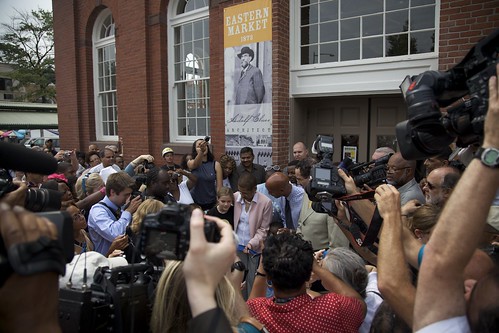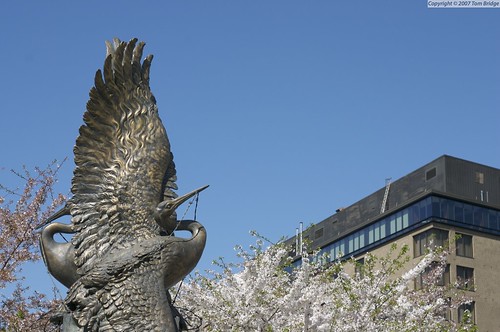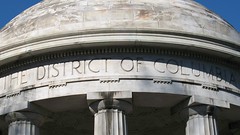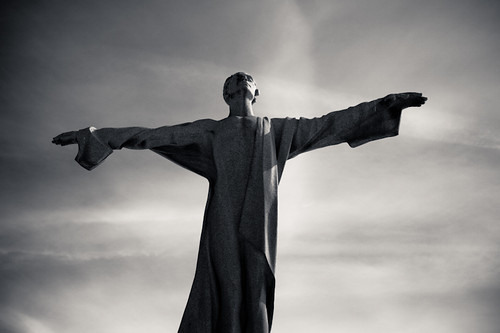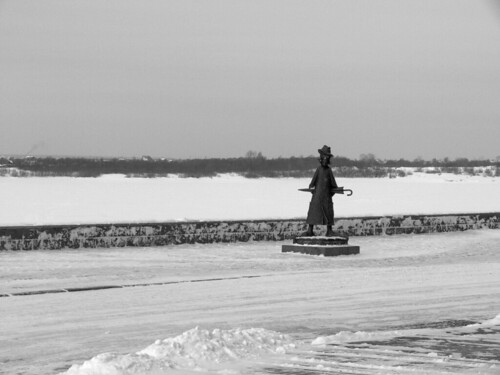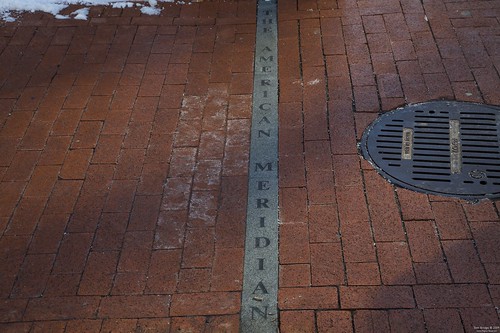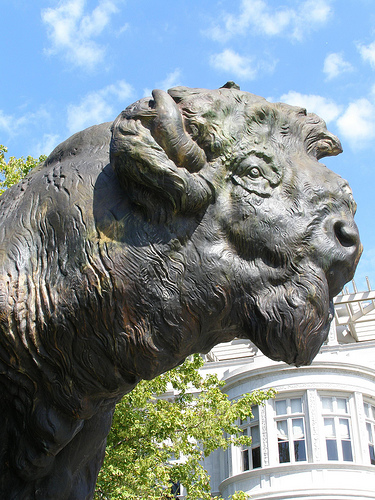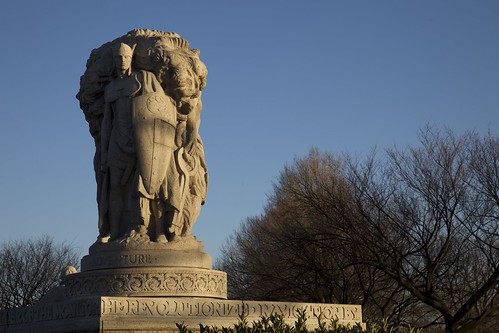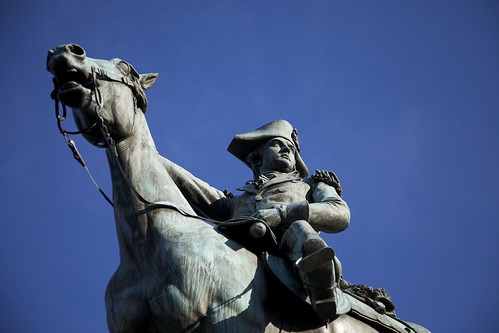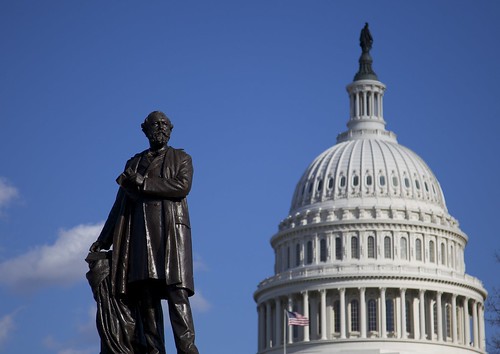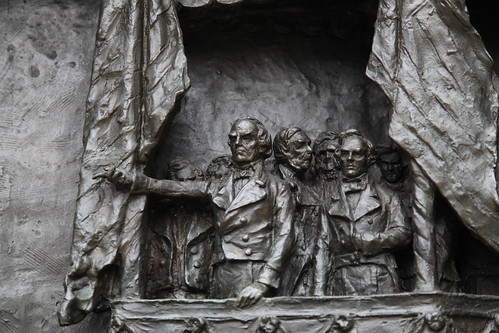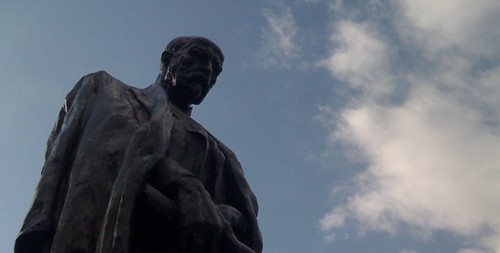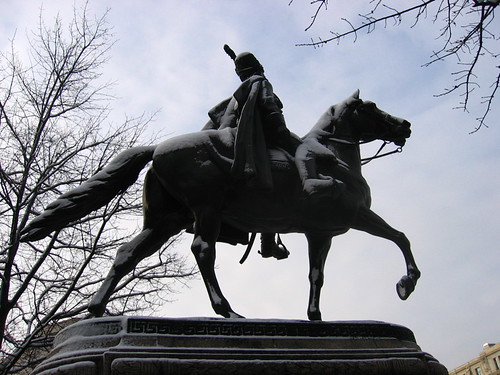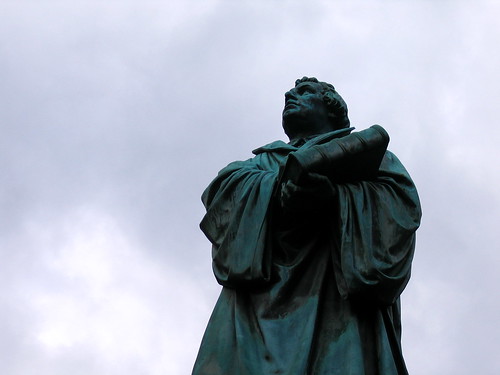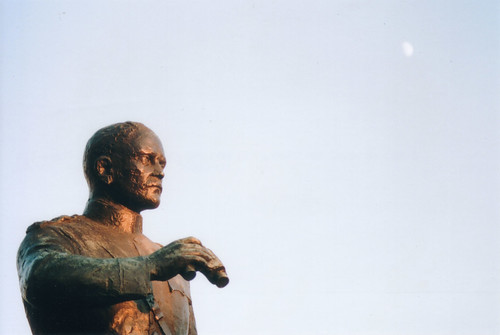
‘Film! – Canon A-1 – Pershing in Focus -11-7-08’
courtesy of ‘mosley.brian’
Few people think much of Pershing Park. I’d wager that most walk by without noticing it. In spite of Pershing Park being DC’s largest World War I memorial, it serves primarily as a napping place for the homeless and a thoroughfare for tourists walking from Federal Triangle station to the White House. You never see people stopping to take pictures or reading the inscriptions on statue pedestals, and the space is a bit disordered and poorly maintained. In and of itself, the park is hardly worth writing about, but it does serve as a disheartening case study of Americans’ indifference towards our nation’s participation in the Great War.
Pershing Park is located on 15th and Pennsylvania, between the Willard and the Commerce building. It was constructed in 1981 by the Pennsylvania Ave. Development Commission in honor of Gen. John J. Pershing and the American Expeditionary Forces. In case you’re a little hazy on your history, Gen. Pershing was one of America’s greatest military minds and “General of the Armies,” the highest rank ever held by any American officer aside from George Washington (although, Washington received this distinction posthumously). Pershing commanded the Expeditionary Forces during World War I and his over all strategy has been credited by many as a deciding factor in the Allied victory of World War I. In the course of a year and a half of combat, his armies suffered over 300,000 casualties, but succeeded in dislodging the Germans from many key locations in Europe.
